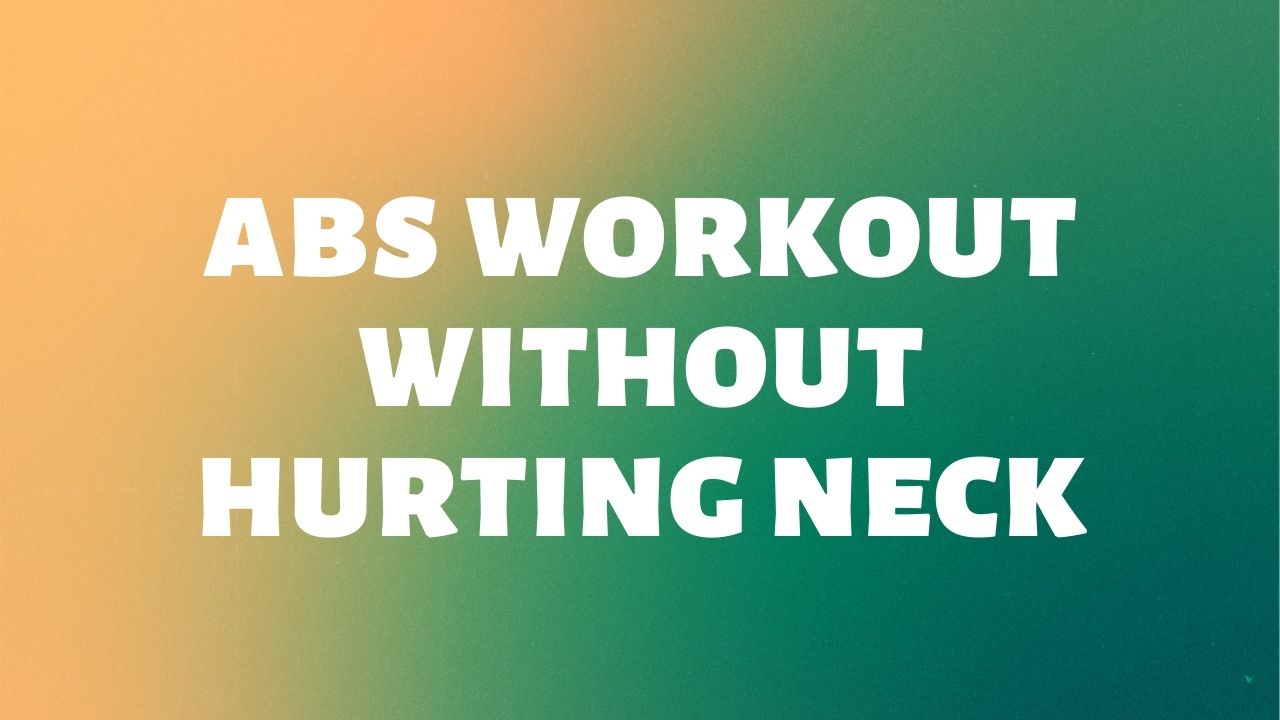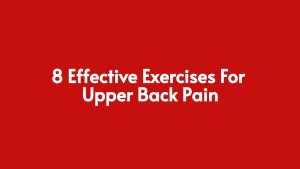Traditional abdominal workouts are frequently associated with neck and back problems. For those who identify as these folks, you may be undecided about whether to give up or push through the discomfort.
Many of my clients complain about soreness in the hamstrings after working out, and it usually comes down to a few issues, all of which are linked to poor form. Listed here are the three most common reasons why ab workouts might aggravate your neck and back, along with quick remedies you can take to protect your neck, back, and prevent further injuries.
Mistake 1: Using your neck instead of your abs as a pulling point
Despite the fact that ab exercises are meant to target your core, many of the positions call for you to lift your head and neck off the ground. In this position, the strain you may feel in your neck is mostly due to bad posture. Sitting, using a computer, and texting all contribute to chronic neck flexion.
When practicing ab workouts, this reinforced incorrect posture can creep in, causing you to pull your head forward and use your neck. Sitting supine means you’re on your back and lying on your stomach.
To get out of this position, you’ll curl up, elevating your head and neck off the mat. If your posture muscles are tight and you’re not used to engaging your core appropriately, this can be uncomfortable.
Work with your tongue
Push your tongue on your upper front teeth and the roof of your mouth.” When you place your tongue on the roof of your mouth and exert pressure with your tongue slightly behind your front teeth, you engage deeper neck muscles and boost your body’s ability to maintain itself.
Train from different angles
For example, movements such as planks, reverse crunches, side crunches, and prone back extensions, in addition to others done while standing, rotating, or sitting. If you’re serious about getting in shape, doing core exercises that target your entire abdominal complex.
Instead of being the odd one out performing your own workout routine, you could join a Pilates or core class.
Use a workout towel
Draping a towel over your shoulders and holding on to both ends. While crunching, relax your neck by resting it on the towel instead of your chin. This is a terrific method to rest your neck muscles while still working your core hard. Holding the weight of your head in a towel also gives you a burning sensation in your arms!
Mistake #2: You’re relying on your arms instead of your core to do the heavy lifting.
It’s entirely possible that you’re working your arms to exhaustion. If you’re not using a towel and instead are placing your hands behind your head, keep in mind that this is not an arm workout and should be treated as such. Your hands and arms are merely serving as a backbone for your neck’s structure. However, a common blunder is to focus on the arms instead of the abs.
With exercises like crunches, you may overcompensate by gripping your neck with your hands instead of focusing on the ab activation. It’s really normal for people to want to pull their neck when they put their fingertips behind their head. For numerous people. Although it’s a habitual behavior, even if you don’t believe it applies to you, keep these two suggestions in mind:
Slow down
Go at a slower pace. Some people push themselves to move as fast as possible in order to complete their training sooner. Instead of taking your time through a workout, this results in a jolting and jerking motion. By doing this, you’re attempting to retrain your body and mind to move more from your abs instead of their joints. This is a lengthy process.
Focus on where your movement is coming from
Pay attention to the direction in which you’re moving. If you’re doing ab exercises, you actually want to initiate movement from your abs. While performing the motion, rest your head on your fingertips and concentrate on your form.
Mistake 3: You’re Lifting with Your Back Instead of Your Core!
A lot of people doing core exercises with their back instead of their abs. Incorrect use can result in a lower back injury, thus this is worrying. To avoid overworking the low back, it’s critical to concentrate on the transverse abdominis, the deepest ab muscle, when performing core workouts.
Exercises that require you to extend or straighten your legs are most likely to cause this type of injury. Keep your core engaged and you will feel this deep in your core muscles when done correctly (and not so much in your back.)
But how can you ensure that you have the proper engagement?
Reduce the range of motion
Reducing the range of motion is fix number one. Whether you’re going laterally or side to side when doing ab exercises, reduce the range of motion by 50%. You can make sure your abs perform the work and your back stays in contact with the floor if you make yourself do smaller motions.
Place your hands under your butt
Fix number two: Put your hands under your butts and press down firmly. Extended leg motions should be done with the low back on the ground and pain-free. Hughes suggests doing this by sliding your hands under your butt and focusing on your breathing. You can also try rotating your arms and legs as you exhale to see if it helps.
Exercises for the Abdomen Based on Pilates Can Help with Pain
These three suggested actions can help you reset mid-workout so that the pain doesn’t linger and become more of a problem. Finally, try them out. Designed for novices, these changes are useful reminders for anyone who has pain when exercising.
While you’re doing them, they’ll teach you how to make an effective abdominal crunch while lying down without stressing your neck or back.
Doing these exercises regularly will help you perfect your form.
The Basic Pilates Crunch
Lie face down on the mat and keep your knees bent and your feet flat. Take a seat with your back against the wall, hands behind your head, and your head resting in your hands. Pulling your navel toward your spine while taking a deep breath is a good way to relax your entire body.
Pull your lower ribs toward your hips, and then curl up so that your head and hands are off the ground as a result of this core engagement. While curling up, take an exhalation and an inhalation at the same time.
Ten times is the magic number.
Pilates Toe taps
Take a deep breath in and out while lying on your back on the mat with your feet flat on the ground. Slowly lift your right knee up to a tabletop posture as you exhale. Then repeat on the other side.
As if you were wearing a corset, pull your lower ribs in toward your hips and tighten your abs. While keeping the core engaged, descend the right leg to the ground and tap the toe on the ground.
Upper-body stability is key, as should be a gentle press into the ground and tight abs. As you lower your leg, take a deep breath out and a short one in.
Once you’ve completed 10 reps on the right side, switch to the left side.
Pilates Lower & Lift
Bring your legs straight up towards the ceiling while lying on your back on the mat. To do this, tilt your pelvis such that your lower abs draw in and your back gently presses into the ground (like you’re zipping into a tight pair of trousers).
As you exhale, continue to engage your core by lowering your legs by a few inches to the ground.
To raise yourself, take a deep breath and exhale. Draw your navel in towards your spine to keep your back connected to the mat during the entire exercise.




